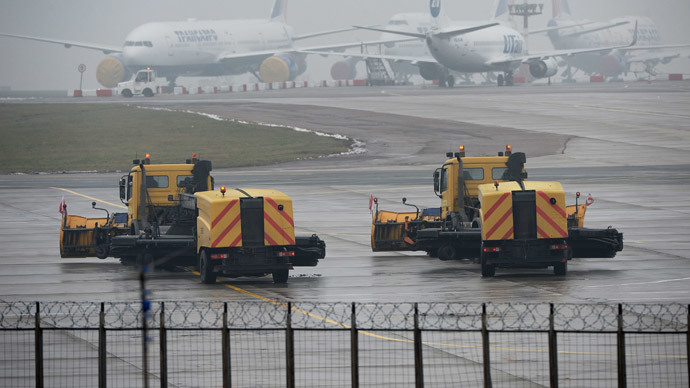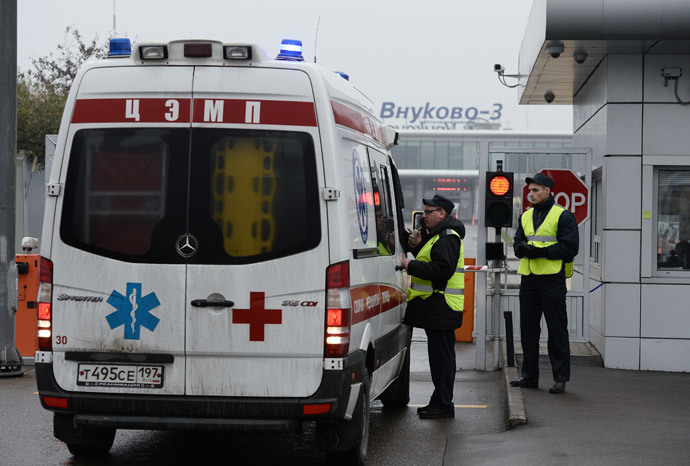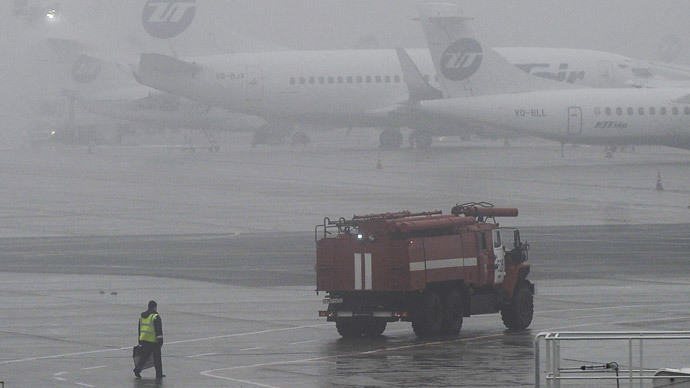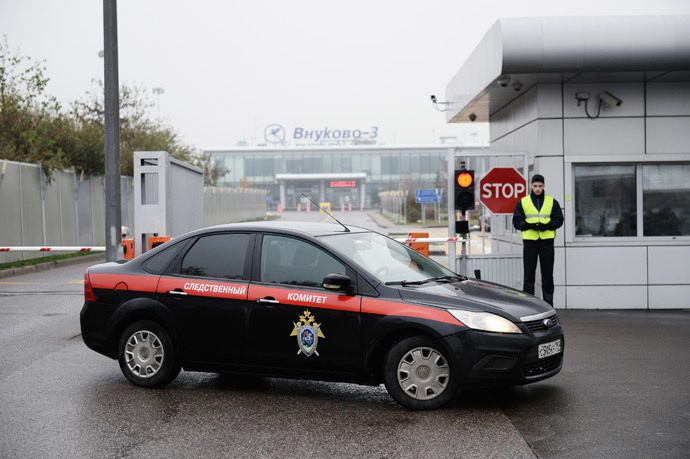‘No way to avoid Total plane crash’

When an aircraft taking off with a lot of fuel on board and maximum speed hits something metal on its way, sparks alongside heat and pressure are inevitable, and this is catastrophic for any plane, Head of Aviation at CQ University Ron Bishop told RT.
RT:What are the usual measures to control airport staff and an airport’s readiness for a flight?
Ron Bishop: You see, what they do, is they screen employees very well, they also do drug testing to make sure they are not on any kinds of drugs, they make sure that they do a background check to ensure that none of this is habitual, that they are not used to doing this. Although this is quite concerning because if they are driving a snow-blower or a snowplow machine, the last thing you want is them to drive around under the influence of alcohol. So, very unfortunate and it’s unacceptable, isn’t it?
READ MORE:First video: Total CEO’s Falcon 50 plane crash site in Vnukovo Airport
RT:Does this tragedy mean that there are problems with control systems at Vnukovo Airport? Which service in particular is responsible for the checks before flight?
RB: The biggest thing is ground control. The ground control probably should have been able to notify or…well, air traffic control, or someone in the tower hopefully would have seen them, but if they are doing snow removal, the visibility is probably poor, so that check is not there.
When you have, we call it ‘the air chain’, it’s like having a chain of events. So when you have something like this happen, basically this chain of events has to line up, almost like all the holes in two pieces of Swiss cheese, for something like this to happen. It’s very unfortunate and what happens is that with this check and balance of being able to see from the tower, with that check and balance to make sure that they don’t drink while on duty - maybe their supervisor making sure that if they have seen them before to make sure to bring that up with them – or even with their supervisor.

All those checks and balances would have had to line up in the opposite way basically and then something like this is able to happen, call it an air chain or the Swiss cheese model. It’s quite sad that this happened, so what we probably need to do is look at more safe checks and balances and also maybe have a vehicle-free zone, and if vehicles go outside this zone, then they need a radio in or tower or the ground controllers who would question the person driving the vehicle.
RT:We heard about various cases when a plane hits something on its way and everything ends up well. In other words, normally such accidents don’t result in deaths. Why is it different this time?
RB: Not normally, but we have to remember that this was on take-off. During take-off there was a few things that happened. The aircraft is configured in such a way that it makes it more susceptible to something like this. So when you are going to take-off using full fuel, lots of fuel on board, if you hit anything – you see, what happens with metal, when it tears or rips or moves or hits other metal, it causes a spark and then that spark along with heat and pressure and anything else that agitates the fuel, sets it alight, also forcing the fuel into, say, the engines by shifting the engines – also can cause that as well - that fuel would ignite and cause issues.
The other thing too is that they were probably going on a fairly good rate of speed because when you are doing take-off you want max speed, so it would be like driving down the highway and hitting a snow removal machine with your car - the same kind of catastrophic events for a car as well. The only thing with a car though, because you are not as limited on weight, cars usually have more protections built-in, whereas an aircraft to make it very light for flight doesn’t have that protection on the ground.

RT:Does every state aviation authority have its own rules?
RB: It is pretty much the same rules because they are going off at the airport that it is all governed by wherever the governing body will be. Here in Australia it is CASA [the Civil Aviation Safety Authority]. In America it’s the Federal Aviation Authority. So what happens is they are all controlled, they all have to get by the same rules. So they would be going by the same rules. The only issue is, it sounds like the visibility might have been poor, so the pilots might not have been able to see the snow-blower until it was too late. The other thing too is - not like a vehicle – once an aircraft is going straight down the runway they really can’t get out the way too easy. What I mean by this is that you can’t swerve like you can in a car, because if you swerve you wind up off the runway and then it is catastrophic as well. Either way they probably would have the same result even if they were in time to slow down or swerve or…get out the way.
RT:In your opinion, was the poor visibility the main reason of the plane crash?
RB: We don’t know what the visibility was like, but if the snow-blowers are out that probably means that visibility is not very good, because of the snow. So you probably wouldn’t be able to see it – or if you were, it’s too late. Even slamming on the brakes, you’re probably going to hit it anyway. And that why it sounds like it was a runway incursion and that is why they have big serious rules about letting vehicles on to an active runway. And that is one of the checks and balances that exists. But like I said before, what happens is that safety error – what usually happens is one wrong thing doesn’t necessarily mean you are going to have an accident. Sounds like with this thing about three to four things lined up which is why they had an accident.

RT:What kind of evidence could help in the investigation of the accident?
RB: The biggest thing that we will be looking at what impact had the snow machine had – where it was located, were there any tire marks, where the snow machine might have tried to stop once they realized the aircraft was going to hit them. Also if there any tire skid marks on the aircraft side, if they tried to swerve or move out of the way. Investigators will look real deep to figure out what is going on, they’ll look at the last 24, 48 [hours] and sometimes a week prior for each pilot to see what they were doing and how their fatigue levels were, if they had any fatigue. And they also look on the side of the driver of the snow machine to find out what was happening with that as well.
They’ll interview everyone and they will put it all together, they’ll pull the flight data recorder and find out what was said what was done on the flight. And then they’ll interview anyone that had witnessed it or was a part of it.
The statements, views and opinions expressed in this column are solely those of the author and do not necessarily represent those of RT.
The statements, views and opinions expressed in this column are solely those of the author and do not necessarily represent those of RT.











